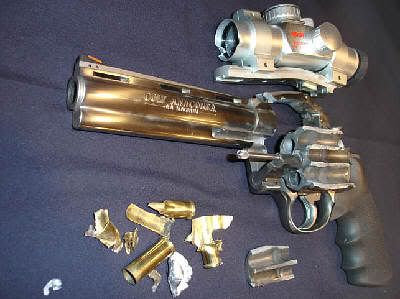Ah, the old DuPoint PB..although I always thought it looked more like oatmeal/cream of wheat than soap.

My Grandfather loaded his 12 ga shells with it up through the 40s...
Neat stuff, which I felt should be considered "semi-smokeless". It does smoke less than black powder (and without the fouling) but it smokes more than "regular" smokeless powder does today. One of the neatest things about firing some of Papa's old shells in his old Ithaca, you could then open the gun, extract the empties, and look at a line of smoke just hanging down the middle of each barrel.

I would expect modern in-line muzzleloaders to be made of modern gun steel, and theoretically there would be a safe smokeless powder load for any of them, BUT, there's no telling what that would be, IF the gun was made of steel to handle it. If the maker doesn't have data on that, there is probably a good reason!
The old guns were made of steels that range from alloys close to modern gun steel to "steel" with just enough alloy to technically not be iron. Strong enough for black powder but nothing else.
I would like to point out that while we don't see blow ups in the old guns from firing "safe black powder pressure" smokeless loads, we do see a steady (if small) loss of the old guns due to cracked frames/recievers, etc., even when only using the "safe" smokeless loads.
This may simply be due to the age of the guns and they are finally giving up the ghost, but many think differently. Enthusiasts of these old guns, including some nationally recognized writers have remarked on how they have seen failures shooting the "safe" smokeless loads and identical guns firing only black powder loads continue to survive normally.
The theory seems to be that while the total pressure is the same limits as black powder, smokeless delivers that pressure differently, and over a different time frame, which puts a different kind of stress on the steel. Many of them believe it is very unwise to shoot any smokeless load in pre-1890s guns. They feel that even the "safe pressure" smokeless loads pose an unacceptable risk to the old guns.
If you just pour smokeless powder into your muzzleloader, you are an accident waiting to happen, and it will very likely happen VERY shortly after pulling the trigger!!!!
I once saw where a fellow fueled his deuce and a half with jet fuel. The truck's engine ran "like gangbusters" for about 30 seconds, then the flywheel came up through the cab, and killed the driver.
Smokeless in your muzzleloader? Not an identical situation, but there are some important similarities.
I wouldn't do it.

